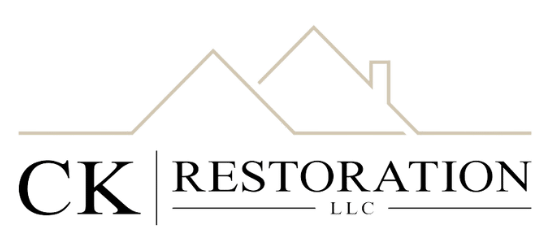When your home is flooded, every minute counts. Knowing how to remove standing water quickly can make all the difference in saving your property and reducing long-term damage. Water in your home can be overwhelming and stressful, but with the right techniques, you can take control and start drying things out fast. From simple DIY methods to professional-grade equipment, there are several effective ways to get rid of water and dry out your space.
In this guide, we’ll walk you through essential water extraction techniques, when to consider professional help, and how each method can protect your home from further damage. So, let’s get started—because when water threatens your home, you want to act fast!
1. The Basics of Water Extraction: Why Speed Matters
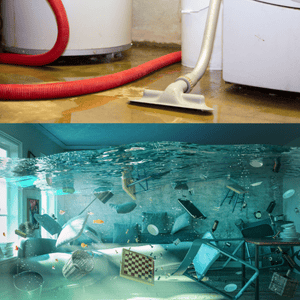
Water extraction isn’t just about mopping up puddles. It’s the essential first step in any effective drying and restoration process. Standing water can seep into floors, walls, and even the structure of your home, causing damage that worsens over time.
Standing water can lead to mold growth within 24 to 48 hours. This, plus warped floors and weakened walls are just a few of the issues that can arise if water isn’t removed promptly.
Identifying the category of water damage is crucial for effective restoration. Learn more about water damage categories in our detailed blog post: What Category Water Damage Are You Battling- 1, 2, or 3?
Acting fast with proper water extraction techniques can help prevent these problems, saving you time, money, and stress. At CK Restoration, we’ve seen how quickly water damage can escalate, which is why it’s important to tackle it as soon as possible.
2. First Step: Remove Standing Water
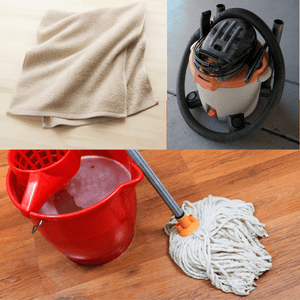
If there’s a large amount of standing water, you’ll want to remove as much as possible as quickly as you can. This step is often the most hands-on, but it’s also the most critical in getting ahead of water damage.
Here’s How You Can Start:
- Basic Tools: Use items you likely have at home, like buckets, mops, and towels, to start absorbing and removing water.
- Wet-Dry Vacuum: If you have a wet-dry vacuum, this can be a huge help for smaller floods, especially on floors and carpets. Unlike a regular vacuum, wet-dry vacuums are designed to handle water safely.
- Safety First: Avoid areas with potential electrical hazards, and always check to see if water has reached any outlets or electrical appliances. Safety is always the top priority, especially when dealing with water removal.
Removing the bulk of the water is a great first step and makes the rest of the drying process much easier.
For more insights on common pitfalls during flood cleanup, check out our blog post on avoiding flood damage cleanup mistakes.
3. Floodwater Extraction Tools: When Basic Isn’t Enough
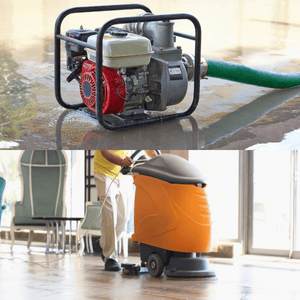
For larger or more severe floods, basic tools may not be enough. In these cases, flood extraction tools become essential for effective water removal.
Essential Flood Extraction Tools:
- Flood Extraction Pumps: These pumps are designed for large volumes of water. They work by sucking up standing water and pumping it out of your home. While they’re available to rent, using one effectively takes a bit of know-how, so consider bringing in a professional if you’re unfamiliar.
- Industrial Vacuums: High-powered vacuums are essential for severe flooding situations. Unlike standard vacuums, industrial vacuums are designed for heavy-duty extraction and can handle much more water.
Flood extraction tools are often best handled by professionals, especially if the water has reached multiple rooms or levels in your home.
4. Industrial Vacuum for Floodwater Extraction: Power Up Your Drying Efforts
An industrial vacuum is one of the most powerful tools for floodwater extraction. If you’re dealing with a lot of water, it can be a game-changer.
Why Industrial Vacuums Work So Well:
- Higher Capacity: Industrial vacuums are built to handle large amounts of water quickly. They’re a step up from wet-dry vacuums, making them ideal for bigger jobs.
- Effective on Carpets and Floors: Industrial vacuums are especially effective on carpets and floors, where water often gets trapped.
- Safety Precautions: Always take care when using an industrial vacuum. Be sure to use a machine that’s specifically designed for water extraction, as not all vacuums can safely handle water.
In cases where water covers a large area or is deeply embedded, an industrial vacuum can be the quickest way to remove it and begin drying your home.
5. Water Removal from Carpets and Flooring: Specialized Techniques
Once you’ve tackled the standing water, the next focus is extracting water from carpets and flooring. Carpets, in particular, can hold a surprising amount of water, which can lead to mold and odor if not addressed quickly.
Water Extraction Tips by Flooring Type:
- Carpets: Use a weighted extractor to push water up from deep within carpet fibers. For a deep clean, professional-grade equipment can also help sanitize and deodorize.
- Wood Floors: Water can cause wood floors to warp or buckle. The best approach is to use fans and dehumidifiers to draw moisture out gradually, as rapid drying can sometimes cause more harm than good.
- Tile and Hard Surfaces: With tile and grout, water often seeps underneath. Use a wet-dry vacuum first, then fans to help remove trapped moisture.
Each type of flooring has unique needs when it comes to water extraction, so tailor your approach to avoid damage and maximize drying.
6. Dehumidification and Air Movement: Essential Steps for Drying
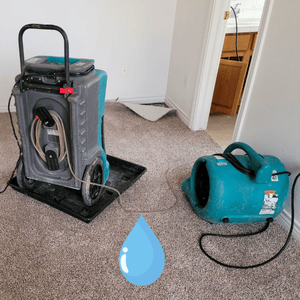
Water extraction is only the first step. To fully dry your home, dehumidification and air circulation are essential. Even after visible water is removed, there’s often moisture left in the air and deep within materials.
How to Speed Up Drying:
- Dehumidifiers: Place dehumidifiers in affected areas to pull moisture from the air. This prevents water from re-settling on surfaces and speeds up drying.
- Fans for Air Circulation: Fans help circulate air, which reduces humidity levels. Set up fans strategically around the room to move air in and out, keeping it flowing.
- Combine Forces: Dehumidifiers and fans work best together. The fans move air, while the dehumidifiers capture and remove moisture, creating an optimal drying environment.
Utilizing dehumidifiers can significantly speed up the drying process and prevent mold growth.
7. When to Call a Professional for Water Removal
While there’s a lot you can do on your own, some water extraction situations call for professional help. If the water has penetrated walls, ceilings, or insulation, or if the flooding is widespread, it’s best to bring in professionals who have the tools and expertise for comprehensive water removal.
Signs You Need Professional Water Extraction:
- Widespread Flooding: If multiple rooms or floors are affected, it’s likely more than a DIY job.
- Persistent Moisture: If areas stay damp even after extraction, moisture might be trapped in walls or flooring.
- Health Risks: If the water was contaminated (like from a sewer line or outdoor flooding), professionals can ensure thorough cleaning and sanitization.
Professional water extraction services, like those we offer at CK Restoration, provide peace of mind, knowing your home is fully dried and protected from further damage.
To understand the comprehensive restoration process, read our step-by-step guide to water damage restoration here.
Pro Water Extraction Techniques Dry Out, Protect, and Prevent Future Damage
By using effective water extraction techniques, you can significantly reduce damage to your home after a flood or leak. Removing standing water quickly and following up with thorough drying methods can make a huge difference. Here are a few final tips to keep in mind:
- Act fast to prevent water from seeping into floors and walls.
- Use the right tools for each step—flood pumps, vacuums, dehumidifiers, and fans.
- Remember that some situations call for professional help.
Ready to dry out your home? CK Restoration is here to help. Contact us for fast, professional water extraction services that protect your home from further damage. Call now to get your home back to dry and safe conditions.
